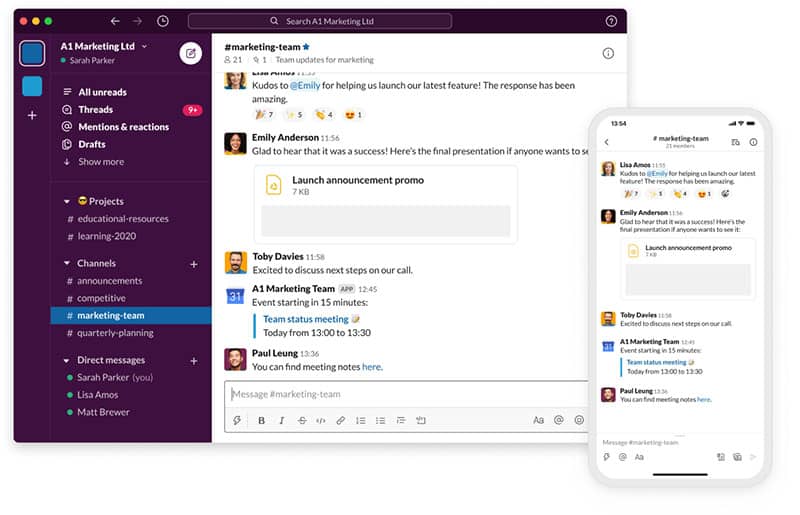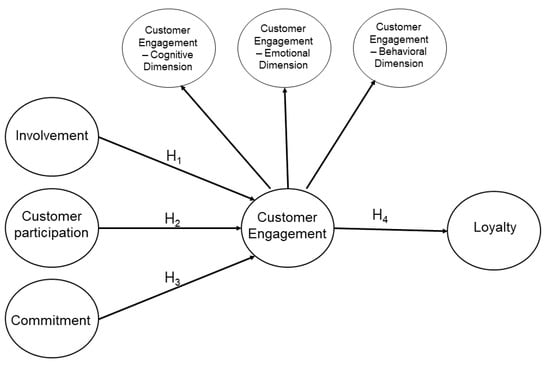
Published: Nov 30, 2024
7 Killer Content Marketing Strategies for Startups in 2025
7 Killer Content Marketing Strategies for Startups in 2025
I’ve seen startups rise and fall faster than you can say “unicorn,” and let me tell you, content is king… and queen… and the whole royal court! As someone who’s helped countless small businesses go from zero to hero, I’m about to spill the beans on some killer content strategies that’ll make your startup the talk of the town (and the internet).
TLDR: Why is content marketing crucial for startups, and how can it give you an edge?
1️⃣ Why is content marketing so effective for startups?
Content marketing is a startup’s secret weapon because it builds trust, establishes authority, and attracts customers without breaking the bank. It’s like having a 24/7 salesperson who never sleeps and doesn’t ask for commission. By creating valuable, relevant content, startups can connect with their audience, solve their problems, and stand out in a crowded market - all while keeping costs low.
2️⃣ What types of content work best for startups?
The best content for startups is a mix of educational and entertaining material that speaks directly to their target audience’s pain points. This can include blog posts, how-to guides, infographics, videos, podcasts, and social media content. The key is to focus on quality over quantity, providing real value that positions your startup as an industry expert and go-to resource.
3️⃣ How can startups measure the success of their content marketing efforts?
Startups can measure content marketing success through various metrics, including website traffic, engagement rates, lead generation, and conversion rates. Tools like Google Analytics, social media insights, and email marketing metrics can help track these KPIs. It’s important to align these metrics with your overall business goals, whether that’s raising brand awareness, driving sales, or attracting investors.
Table of Contents
- Implementing Your Content Marketing Strategy
- Common Content Marketing Mistakes to Avoid
- Future Trends in Content Marketing for Startups
- Understanding Content Marketing for Startups
- Measuring Content Marketing Success
- Top 7 Content Marketing Strategies for Startups
Implementing Your Content Marketing Strategy
Alright, let’s roll up our sleeves and get into the nitty-gritty of making your content marketing strategy work for your startup. I’ve helped dozens of small businesses crush it with content, and I’m gonna break down the process for you step-by-step.
1. Set Clear Goals
First things first, you need to know what you’re aiming for. Are you trying to boost brand awareness? Generate leads? Drive sales? Maybe all of the above? Whatever it is, get specific. For example, instead of just saying “increase website traffic,” try “increase organic website traffic by 50% in the next 6 months.”
2. Know Your Audience Inside and Out
You can’t create killer content if you don’t know who you’re talking to. Dive deep into understanding your target audience:
- Create buyer personas
 These are fictional representations of your ideal customers. Give them names, jobs, hobbies, pain points – the works.
These are fictional representations of your ideal customers. Give them names, jobs, hobbies, pain points – the works. - Use tools like Google Analytics to understand your current audience demographics and behavior.
- Conduct surveys or interviews with existing customers to get direct insights.
3. Develop Your Content Strategy
Now that you know your goals and audience, it’s time to plan your content:
- Choose your content types: Based on your audience preferences, decide on a mix of blog posts, videos, podcasts, infographics, etc.
- Create a content calendar: Plan out your content topics and publishing schedule. Tools like Trello or Asana can help keep you organized.
- Align content with the buyer’s journey: Make sure you’re creating content for every stage, from awareness to decision.
4. Optimize for SEO
Don’t sleep on SEO – it’s your ticket to getting found online. Here’s a quick checklist:
- Keyword research
 Use tools like Ahrefs or SEMrush to find relevant keywords with good search volume and low competition.
Use tools like Ahrefs or SEMrush to find relevant keywords with good search volume and low competition. - On-page optimization: Include your target keyword in your title, headers, and throughout your content naturally.
- Technical SEO: Make sure your site is mobile-friendly, loads fast, and has a clear structure.
5. Create High-Quality Content
This is where the rubber meets the road. When creating content:
- Focus on providing value to your audience.
- Use a conversational tone – write like you talk.
- Include real-life examples and data to back up your points.
- Break up text with headers, bullet points, and images for easier reading.
6. Distribute and Promote
Creating great content is only half the battle. You gotta get it out there:
- Social media Share your content across platforms where your audience hangs out.
- Email marketing: Send your latest content to your email list.
- Outreach: Reach out to influencers or other businesses in your niche to share your content.
7. Measure and Adjust
Last but not least, keep tabs on how your content is performing:
- Use Google Analytics to track website traffic, time on page, and bounce rates.
- Monitor social media engagement metrics like shares, comments, and likes.
- Track leads and conversions generated from your content.
If something’s not working, don’t be afraid to pivot. Maybe your audience prefers video over blog posts, or maybe certain topics resonate more than others. Use these insights to continually refine your strategy.
Real-World Example: Buffer’s Content Marketing Success
Let’s look at how Buffer, a social media management platform, killed it with their content marketing:
- They set a clear goal: Become the go-to resource for social media marketing advice.
- They knew their audience: Small business owners and marketers struggling with social media.
- Their strategy focused on creating in-depth, actionable blog posts and guides.
- They optimized for SEO, targeting long-tail keywords like “how to get more Twitter followers.”
- They created high-quality, data-driven content that provided real value.
- They distributed content through their own social channels and email list.
- They constantly measured performance and doubled down on what worked.
The result? Buffer grew from 0 to over 1 million users in just 3 years, largely thanks to their content marketing efforts.
Remember, implementing a content marketing strategy isn’t a one-and-done deal. It’s an ongoing process of creating, measuring, and improving. But stick with it, and you’ll see your startup grow in ways you never imagined. Now get out there and start creating some killer content!
Common Content Marketing Mistakes to Avoid
Look, I’ve seen startups make some pretty cringe-worthy content marketing mistakes. Let’s break down the big ones so you can dodge these bullets:
Inconsistent Publishing
One week you’re pumping out content like there’s no tomorrow, the next… crickets. Big mistake. Your audience needs to know when to expect new stuff from you. Set a realistic schedule and stick to it. Even if it’s just one killer blog post a month, consistency is key.
Ignoring SEO
I can’t tell you how many times I’ve seen great content buried on page 50 of Google because the creator didn’t bother with SEO. Don’t be that person. Learn the basics of keyword research and on-page optimization. Tools like Yoast SEO can help if you’re using WordPress.
Focusing on Quantity Over Quality
Some startups think they need to churn out content 24/7. Nope. One in-depth, well-researched piece will outperform a dozen fluffy articles any day. Take the time to create something truly valuable.
Neglecting Distribution
You wrote an amazing blog post. Now what? If you’re not actively promoting your content, you’re missing out big time. Share it on social media, send it to your email list, reach out to influencers in your niche. Get that content in front of eyeballs!
Ignoring Analytics
Flying blind with your content strategy is a recipe for disaster. You need to know what’s working and what’s not. Set up Google Analytics and actually look at the data. Which posts are getting the most traffic? Where are your leads coming from? Use this info to guide your future content.
Not Optimizing for Mobile
With over half of web traffic coming from mobile devices, if your content isn’t mobile-friendly, you’re alienating a huge chunk of your audience. Make sure your website is responsive and your content is easy to read on a small screen.
Forgetting a Call-to-Action (CTA)
You’ve got your reader’s attention… now what? Every piece of content should guide the reader towards some action, whether it’s signing up for your newsletter, downloading a whitepaper, or checking out your product. Don’t leave them hanging!
Real-World Example: Groove’s Content Marketing Turnaround
Groove, a help desk software company, initially struggled with their content marketing. They were making a bunch of these mistakes:
- Inconsistent publishing
- Creating generic, “me-too” content
- Neglecting promotion
Their blog was getting crickets. So, they decided to overhaul their strategy:
- They committed to publishing high-quality, in-depth content twice a week.
- They focused on transparency, sharing real numbers and struggles from their startup journey.
- They actively promoted each post, spending 80% of their time on distribution.
The result? Their blog subscribers grew from 1,000 to 5,000 in just 5 weeks. Their content became a major driver of new trial signups for their product.
Avoiding the “Build It and They Will Come” Trap
One last thing: don’t fall into the trap of thinking great content alone is enough. I’ve seen too many startups pour their hearts into amazing blog posts or videos, only to have them sit unnoticed in a corner of the internet.
Remember, content marketing is part creation, part promotion. You need both. So, plan your distribution strategy before you even start creating your content. Think about where your audience hangs out online and how you’ll get your content in front of them.
By steering clear of these common mistakes, you’ll be way ahead of the game. Now go out there and create some content that’ll knock people’s socks off!
Future Trends in Content Marketing for Startups
Let’s talk about what’s coming down the pike in content marketing. I’ve been in this game long enough to see trends come and go, but these are the ones I’m betting will stick around and shake things up for startups.
Artificial Intelligence (AI) in Content Creation
AI’s not just a buzzword anymore. It’s changing how we create and distribute content:
- AI-powered writing assistants: Tools like Jasper and Copy.ai are getting smarter. They’re not replacing human writers (thank goodness), but they’re great for generating ideas and first drafts.
- Personalized content at scale: AI’s making it possible to tailor content for individual users based on their behavior and preferences. Imagine sending thousands of personalized emails, each one different.
Voice Search Optimization
With smart speakers in millions of homes, optimizing for voice search is huge:
- Focus on long-tail, conversational keywords. People talk to Alexa differently than they type into Google.
- Create FAQ pages that answer common questions in your niche. These are gold for voice search.
Video Content Dominance
Video’s been big for a while, but it’s not slowing down:
- Short-form video: Platforms like TikTok and Instagram Reels are exploding. Even B2B startups are finding success here.
- Live streaming: It’s raw, it’s real, and audiences love it. Great for product demos or behind-the-scenes looks at your startup.
Interactive Content
Static content? Boring. Interactive content? Now we’re talking:
- Quizzes and assessments: These are engagement machines. Plus, they’re great for collecting user data.
- 360-degree videos: Especially useful for startups in real estate, travel, or e-commerce.
Podcasting 2.0
Podcasts aren’t new, but they’re evolving:
- Micro-podcasts: Short, focused episodes perfect for busy listeners.
- Podcast SEO: With Google now indexing podcast content, optimizing your show notes and transcripts is crucial.
User-Generated Content (UGC) on Steroids
UGC’s always been powerful, but it’s reaching new heights:
- TikTok Challenges
 Create a challenge related to your product and watch users generate tons of content for you.
Create a challenge related to your product and watch users generate tons of content for you. - Customer Stories: Go beyond testimonials. Let customers tell their stories in their own words and videos.
Augmented Reality (AR) Content
AR’s not just for gaming anymore:
- Virtual try-ons: Perfect for e-commerce startups selling clothes, makeup, or home decor.
- AR-enhanced how-to guides: Show users how to use your product in their own space.
Real-World Example: Warby Parker’s Virtual Try-On
Warby Parker, the eyewear startup, knocked it out of the park with their AR-powered Virtual Try-On feature. Users can see how glasses look on their face right from their phone. It’s fun, it’s useful, and it drives sales. That’s the future of content marketing right there.
The Bottom Line
The future of content marketing is all about personalization, interactivity, and immersion. It’s not enough to just put words on a page anymore. You’ve got to create experiences.
But here’s the kicker: don’t chase every shiny new trend. Pick the ones that make sense for your startup and your audience. If your customers aren’t on TikTok, don’t waste your time there. If they’re all about podcasts, go all in on audio content.
Remember, at the end of the day, it’s still about providing value to your audience. These new trends and technologies are just tools to help you do that better. So keep your eye on the prize, stay flexible, and don’t be afraid to experiment. The future of content marketing is bright, and there’s plenty of room for startups to shine.
Understanding Content Marketing for Startups
Let’s break down content marketing for startups, no fluff, just the real deal. I’ve seen firsthand how powerful this stuff can be when done right.
What Is Content Marketing, Anyway?
At its core, content marketing is about creating and sharing valuable, relevant content to attract and engage a specific audience. For startups, it’s your secret weapon to build brand awareness, establish authority, and drive growth without breaking the bank.
Why Content Marketing Is a Startup’s Best Friend
-
- Content marketing costs 62% less than traditional marketing but generates 3x as many leads per dollar spent.
- Perfect for cash-strapped startups looking to maximize their marketing budget.
Building Trust and Credibility

- 70% of consumers prefer getting to know a company through articles rather than ads.
- Trust = customers = growth. It’s that simple.
-
- Quality content helps your startup rank higher in search results.
- More visibility = more potential customers finding you organically.
-
- Unlike ads that stop working when you stop paying, content keeps working for you 24/7.
- One great piece of content can drive traffic and leads for years.
Content Marketing Success Stories
-
- Grew from 0 to 100,000 customers in 9 months through content marketing.
- Strategy: Publish high-quality, actionable blog posts on social media marketing.
- Result: Became a go-to resource in their niche, driving massive user growth.
-
- Used content marketing to build a 20,000 subscriber base before launch.
- Strategy: Created a personal finance blog with helpful, easy-to-understand content.
- Result: Sold to Intuit for $170 million just two years after launch.
Types of Content That Work for Startups
-
- The backbone of many content strategies. Great for SEO and establishing expertise.
- Example:Moz built their entire business on the back of their SEO blog.
-
- Visually appealing and highly shareable. Perfect for explaining complex ideas simply.
- Tip: Use tools like Canva to create professional-looking infographics on a budget.
-
- Engaging and versatile. Can be used for product demos, explainers, or behind-the-scenes looks.
- Example:Dollar Shave Club ’s launch video went viral, putting them on the map overnight.
-
- Great for building a loyal audience and establishing thought leadership.
- Example:Gimlet Media started as a podcast about starting a business and was acquired by Spotify for $230 million.
Getting Started with Content Marketing
Know Your Audience
- Who are they? What problems do they have? What content do they consume?
- Use tools like Google Analytics to understand your website visitors.
Set Clear Goals
- What do you want to achieve? Brand awareness? Lead generation? Sales?
- Make your goals SMART: Specific, Measurable, Achievable, Relevant, Time-bound.
Create a Content Calendar
Measure and Adjust
- Track key metrics like traffic, engagement, and conversions.
- Don’t be afraid to pivot if something’s not working. That’s the beauty of content marketing – it’s flexible.
Remember, content marketing isn’t a quick fix. It’s a long-term strategy that requires patience and persistence. But for startups looking to make a big impact with a small budget, it’s one of the most powerful tools in your arsenal. Now get out there and start creating!
Measuring Content Marketing Success
Let’s dive into the nitty-gritty of figuring out if your content marketing is actually working. Trust me, I’ve seen too many startups throw content into the void without a clue if it’s making a difference. Here’s how to avoid that trap.
Key Metrics to Track
-
- Use Google Analytics to track:
- Overall traffic
- Traffic sources (organic, referral, social, etc.)
- New vs. returning visitors
- Look for steady growth over time. If you see spikes, figure out what caused them and try to replicate that success.
- Use Google Analytics to track:
-
- Time on page: Are people actually reading your content?
- Bounce rate: Are they leaving immediately?
- Social shares: Is your content worthy of sharing?
- Comments: Are you sparking discussions?
-
- Track how many leads your content is bringing in.
- Use UTM parameters to track which specific pieces of content are driving leads.
-
- What percentage of your visitors are taking desired actions?
- This could be signing up for a newsletter, downloading a whitepaper, or making a purchase.
Tools for Measuring Success
-
- The gold standard for website analytics. It’s free and powerful.
- Set up goals to track specific actions on your site.
-
- See which queries are bringing people to your site.
- Check for any technical SEO issues.
-
- Heatmaps show where people are clicking on your content.
- Session recordings let you see how people interact with your site.
-
- Track social shares for your content.
- See what content is performing well in your niche.
-
- Track email open rates and click-through rates.
- See which content resonates with your email list.
Analyzing Your Data
Don’t just collect data for the sake of it. Here’s how to make it actionable:
Set Benchmarks
- Compare your performance to industry averages.
- Track your own progress month-over-month and year-over-year.
Look for Patterns
- Which types of content perform best?
- What topics resonate with your audience?
- When is the best time to publish?
A/B Testing
- Test different headlines, content formats, or CTAs.
- Use the results to refine your strategy.
ROI Calculation
- Calculate the cost of creating content (time, resources, etc.).
- Compare this to the value of leads or sales generated.
Real-World Example: HubSpot’s Data-Driven Approach
HubSpot is a master of content marketing, and they’re equally good at measuring it. Here’s what they do:
- They track “lifecycle stage conversion rate” - how many blog readers become leads, and how many leads become customers.
- They use attribution reporting to see which pieces of content influenced sales.
- They regularly audit their content, updating or removing underperforming pieces.
The result? HubSpot’s blog generates over 4.5 million monthly visits and has been a key driver of their growth to a $1.3 billion company.
Don’t Forget Qualitative Metrics
While numbers are great, don’t ignore the qualitative stuff:
- Customer Feedback: Are people reaching out to thank you for your content?
- Sales Team Input: Is your content helping close deals?
- Brand Mentions: Are more people talking about your startup online?
These can be just as valuable as hard data in understanding your content’s impact.
Remember, measuring content marketing success isn’t a one-and-done thing. It’s an ongoing process of tracking, analyzing, and optimizing. But get it right, and you’ll have a clear picture of what’s working, what’s not, and how to take your startup’s content game to the next level. Now go crunch those numbers!
Top 7 Content Marketing Strategies for Startups
Ready to take your startup’s content game to the next level? I’ve helped dozens of new businesses crush it with these strategies, so let’s dive in!
1. Blogging with a Purpose
Blogging isn’t just about churning out posts. It’s about creating valuable content that solves your audience’s problems. Here’s how to do it right:
- Focus on quality over quantity. One killer post a week is better than five mediocre ones.
- Use tools like Google Trends to find topics your audience is searching for.
- Include a clear call-to-action (CTA) in every post.
Real-world example:Groove grew their blog to 5,000+ subscribers in just 5 weeks by sharing honest, detailed posts about their startup journey.
2. Leveraging Social Media Platforms
Social media is your direct line to your audience. Use it wisely:
- Choose platforms where your target audience hangs out. Don’t waste time on TikTok if your customers are all on LinkedIn.
- Create platform-specific content. What works on Instagram might flop on Twitter.
- Engage with your followers. Respond to comments, ask questions, run polls.
Pro tip: Use a tool like Buffer to schedule posts and track engagement across platforms.
3. Creating Engaging Video Content
Video is huge, and it’s only getting bigger. Here’s how to use it:
- Start with explainer videos or product demos. They’re relatively easy to make and super useful for customers.
- Try live streaming for Q&As or behind-the-scenes looks at your startup.
- Don’t forget about YouTube SEO. Use relevant keywords in your titles and descriptions.
Example:Dollar Shave Club exploded onto the scene with a hilarious launch video that went viral overnight.
4. Harnessing the Power of SEO
SEO isn’t just for the big players. Startups can (and should) use it too:
- Do keyword research to find low-competition, high-volume keywords in your niche.
- Optimize your website structure and load times. Google PageSpeed Insights is a great free tool for this.
- Build backlinks through guest posting or creating shareable infographics.
Remember, SEO is a long game. Don’t expect overnight results, but stick with it and you’ll see traffic grow over time.
5. Developing Thought Leadership
Position your startup as an industry expert:
- Share original research or insights. Conduct surveys in your industry and publish the results.
- Write in-depth guides or whitepapers on topics relevant to your audience.
- Speak at industry events or host webinars.
Case study:HubSpot became synonymous with inbound marketing through their consistent, high-quality content and educational resources.
6. Utilizing Email Marketing
Email might seem old school, but it’s still one of the most effective marketing channels:
- Build your list organically. Offer a valuable lead magnet in exchange for email addresses.
- Segment your list based on user behavior or preferences.
- Use personalization. Emails with personalized subject lines are 26% more likely to be opened, according to Campaign Monitor.
Pro tip: Use a tool like Mailchimp to automate your email campaigns and track results.
7. Embracing User-Generated Content
Let your customers do some of the heavy lifting:
- Encourage reviews and testimonials. Display them prominently on your website.
- Run contests or challenges that get users creating content around your product.
- Showcase customer success stories or case studies.
Example:GoPro built a massive following by sharing amazing user-generated videos shot with their cameras.
Remember, the key to successful content marketing is consistency and authenticity. Don’t try to be everywhere and do everything. Pick the strategies that make the most sense for your startup and your audience, and execute them well.
And here’s a final pro tip: repurpose your content across different formats. Turn that blog post into a video, that podcast into a series of social media posts. It’s all about working smarter, not harder. Now go out there and start creating some killer content!








